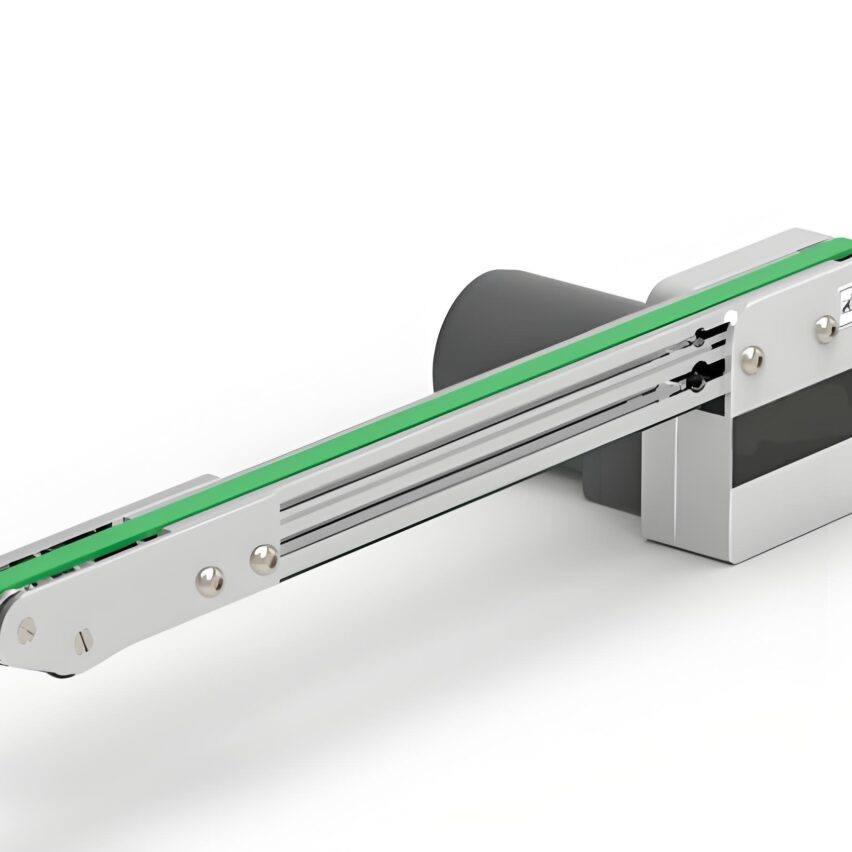Factory space is always not enough? How newcomers can quickly understand the core secrets of industrial equipment-How double track saves ground 40% and also boosts speed 25%
Imagine: the traditional single-deck conveyor line occupies a workshop area of 80%, and the materials are piled up in the corners and blocked up...and theL-shaped double-deck conveyor line by vertical stacking designA new energy battery factory's measured data shows that after the transformation of the workshop, the space utilisation rate has increased by 35%.Footprint directly reduced by 40%The core secret is hidden in the three-layer structure:
- Upper Level High Speed AccessAntistatic PVC conveyor belts running at 2m/s, specialised in conveying finished products.
- Dedicated lower return line: Wear-resistant rubber layer + self-adjusting tension device, silent recovery of empty pallets
- vertical reversing centreServomotor-driven lifting platform (tolerance ±1mm), with photoelectric sensors to complete the "air handover".
Structural disassembly: how do the three main components bite into operation?
1. Skeleton - track body and support system
Inside the main body of the track are embedded a number of sliding bars, each of which is equipped with sliders on both sides. These sliders do not simply slide, they are connected via a pivot to a third support bar, which in turn is rotationally fixed to the lower conveyor chain frame. Simply put:
make a copy ofSlide bar → Slider → Third support bar → Lower chain carrier2. The heart of power - the transmission
The upper and lower decks are each equipped with an independent drive system:
- Servo motor + photoelectric sensor: Trigger generator rotation within 0.3 seconds when material in/out signal is detected
- Bidirectional gear sets: The belt bite between the driving and driven pulleys ensures stable conveyor belt operation.
3. Switching joints - lifting devices
The key component is the fixed frame with the slots! Hidden inside is a two-way screw, and when the motor turns, the movable blocks at the ends of the screw move with the clamping columns facing each other or back--
make a copy ofMotor start → screw rotation → movable block displacement → clamping/unclamping of the clamping postThis action locks the frame in less than 1 second and prevents it from shaking during lifting.
The Collaboration Code: How to Avoid "Crashing" at the Upper and Lower Levels?
pain point scenarioConventional conveying line: when changing direction, the material is piled up into a mountain, and the failure rate is as high as 17%.
Solution - Triple Blocking Mechanism::
- physical interception: Cylinder-driven spacer pops up in 0.3 seconds to form a physical barrier
- precise positioning: The lifting platform has a built-in bi-directional conveyor belt, which allows the material to travel horizontally when moving vertically.
- Cushion unloading: The lower pressure is dispersed through a three-stage structure:
make a copy ofThe third support bar presses down → the slide slides along the slide bar → the side-mounted spring group absorbs the 30% shock [5](@ref)Suzhou Auto Parts Factory real test.Clogging rate plummets from 171 TP3T to 0.41 TP3TFailure interval extended from 800 hours to 2000 hours
Industry Fit Chart: Automotive vs Electronics Configuration Differences
| configuration item | Automotive manufacturing line | Electronic SMT workshop |
|---|---|---|
| Conveyor Belt Material | Oil Resistant Rubber Belt | Anti-static PVC tape (resistance <10³Ω) |
| Key Modules | Regenerative Brake Lift (Power Saver 35%) | RFID Material Tracking System |
| Disable Components | not have | Metal rollers (anti-short circuit board) |
| special requirement | Rack impact resistance > 5 tonnes | Installation of ionic air rods in the commutation area to prevent dust. |
lesson learnt through blood and tears:: A food factory copied a programme from an automotive factory, which resulted in interlayer peeling due to the humid environment.Maintenance costs skyrocket 18%!
Ask Yourself: The Top 3 Most Frequently Asked Questions by Newbies
Q1: What if the lower track is crushed by a heavy object?
A: Look at this mechanical breakdown-
make a copy of8 tonnes of weight → third support bar downward → slider squeezes the spring → slider bar shares longitudinal stressesStress test shows: rail under 8 tonnes of pressureDeformation of only 0.27mmIt is much safer than the industry standard of 1.5mm.
Q2: Won't the upper and lower material handover fall down?
A: The secret is in the design of the clamping post! A groove on the inside of the clamping post hides the spring, which rests against the rubber-padded fixing plate. When clamping the frame:make a copy ofClamping post tightens → rubber pads contact the box → spring adapts to contraction → flexible clamping is formedEven the shaped boxes are stable
Q3: Will all lines be paralysed by a sudden power cut?
A: The latest programme is equipped with double insurance:
- Mechanical overload protection: pressure overruns automatically jam the track
- Battery back-up power supply: 30 minutes of emergency support from the built-in battery in the distribution box
Maintenance avoidance guide: these operations should never be done!
▶︎Not enough height to get on the horse: When the net height of the workshop is less than 5 metres, choose the double-deck system, and the lifting mechanism will not be able to spread at all!
▶︎Ignoring material characteristics: Conveying liquid sealant? Risk of contamination from lower level drips soars 200%
▶︎Blind pursuit of automation: Don't touch a sprocket system that needs weekly lubrication without a professional E&M team!
Shandong gearbox factory stepped on the mine: save 150,000 bus material costs, but because of the lack of humidity sensors to spend more than 280,000 repair costs
Double-deck track with AI vision will become mainstream in the next three years - a logistics warehouse in Guangdong has realised itDynamic Path PlanningWhen the Tesla factory used vibration sensors 48 hours in advance to warn of failures, I really realised: this upward industrial revolution to space, is redefining what is called "inch of land, inch of gold".













